
Introduction: Nubian Village in Egypt,
Nubian Village in Egypt, Nestled along the banks of the majestic Nile River, the Nubian Village in Egypt stands as a living testament to the enduring legacy of an ancient civilization. Steeped in history and vibrant traditions, this hidden gem invites travelers to embark on a journey of cultural immersion and discovery.

A brief overview of Nubian Village in Egypt:
The Nubian Village is a centuries-old settlement that traces its roots back to the time of the pharaohs. Located on the lush shores of the Nile, it bears witness to the remarkable resilience of a people who have preserved their unique way of life through generations. With its distinctive architecture, colorful arts, and warm hospitality, the Nubian Village offers a window into a world that has thrived amidst the ebb and flow of time.

B. Importance of exploring cultural heritage:
Exploring the cultural heritage of the Nubian Village is akin to stepping into a living museum, where every alleyway, every mural, and every conversation carries the weight of history. It provides a rare opportunity to not only witness but to actively engage with traditions that have withstood the test of time. By immersing oneself in this rich tapestry of customs and practices, visitors gain a deeper appreciation for the diversity and resilience of human cultures, fostering cross-cultural understanding and appreciation.
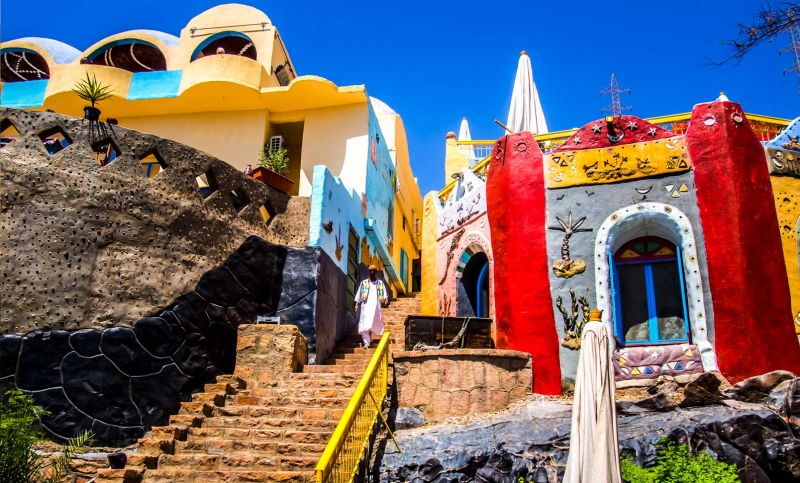
C. Purpose of the article:
The purpose of this article is to serve as a comprehensive guide for those who seek to delve into the heart of the Nubian Village experience. Through detailed exploration and vivid storytelling, we aim to offer a glimpse into the vibrant tapestry of Nubian culture. From its ancient roots to modern-day efforts to preserve its unique customs, we invite readers to embark on a journey of discovery and appreciation. Join us as we uncover the treasures that await in the Nubian Village, and let its rich heritage leave an indelible mark on your own cultural journey.

I. Historical Background of Nubian Village
A. Ancient Nubian Civilization:
The roots of the Nubian Village trace back to the heart of one of Africa’s most storied civilizations. The ancient Nubian civilization flourished along the banks of the Nile River, contemporaneous with the grandeur of pharaonic Egypt. Theirs was a culture steeped in ingenuity, marked by architectural marvels, intricate hieroglyphics, and a deep spiritual connection with the natural world. As the Nile’s life-giving waters ebbed and flowed, so too did the fortunes of the Nubian people, leaving an indelible mark on the sands of time.

B. Influence of Neighboring Cultures:
The Nubian Village stands as a testament to the interconnectedness of civilizations along the Nile. Over the centuries, it became a cultural crossroads, influenced by the ebbs and flows of trade, conquest, and migration. The echoes of ancient Egypt, Greece, and even more distant lands resonate in the architecture, art, and customs of the Nubian people. This amalgamation of influences creates a tapestry of cultural richness, where each thread tells a story of cross-cultural exchange and mutual enrichment.

C. Preservation of Traditions over Time:
In the face of shifting sands and evolving civilizations, the Nubian people have displayed remarkable resilience in safeguarding their cherished traditions. From the intricate pottery to the rhythmic beats of their music, every facet of Nubian culture serves as a living testament to the enduring spirit of a people who have weathered the tides of history. Through the passage of time, the Nubian Village has emerged not as a relic of the past but as a vibrant, living embodiment of a heritage that continues to thrive and inspire generations to come.

II. Geographical Significance
A. Location along the Nile River:
The Nubian Village’s unparalleled geographical setting is a cornerstone of its cultural identity. Nestled along the banks of the mighty Nile River, it enjoys a prime position in the cradle of ancient civilizations. The life-giving waters of the Nile have not only sustained the Nubian people for millennia but have also shaped their way of life, providing fertile grounds for agriculture and a vital trade route connecting distant lands. This strategic location has not only been a source of sustenance but has also played a pivotal role in the cultural and historical tapestry of the Nubian Village.

B. Natural Beauty and Landscape:
Beyond its historical significance, the Nubian Village is blessed with a breathtaking natural landscape that captivates the senses. Towering palm trees sway in the gentle breeze, their fronds casting dappled shadows on the narrow, winding streets. The vivid hues of indigenous flora paint a vibrant backdrop against the azure sky, creating a visual symphony of colors that seem almost too vivid to be real. The natural beauty that envelops the village is a testament to the harmonious coexistence between nature and humanity, further enhancing the allure of this cultural treasure.
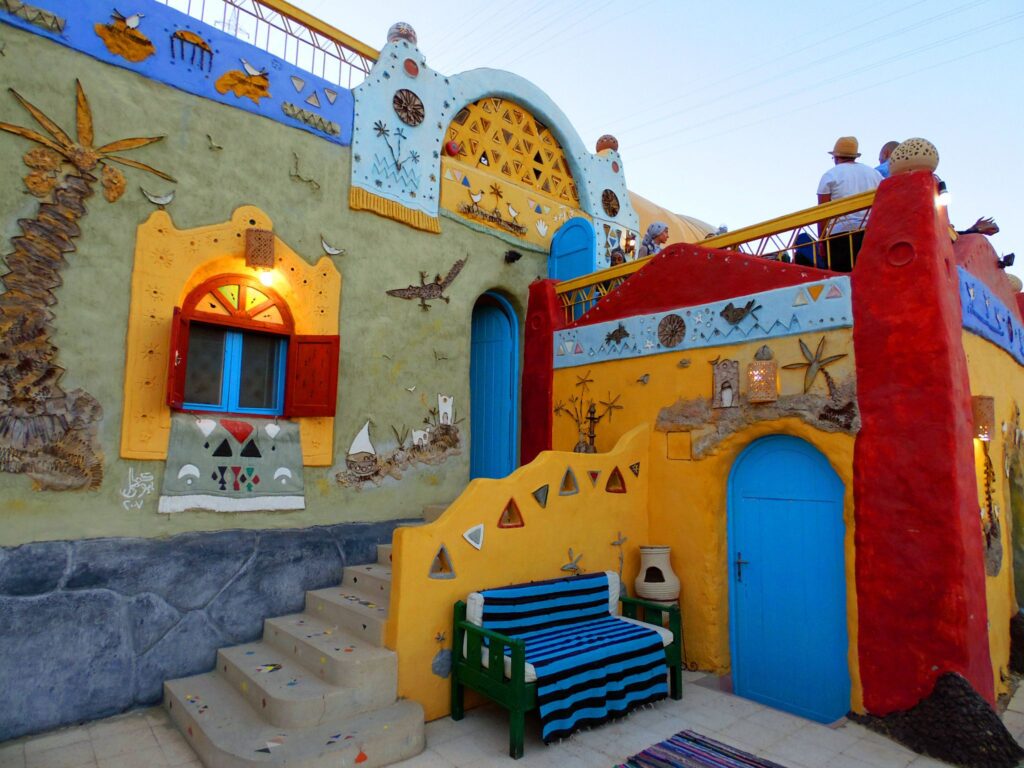
C. Unique Features of Nubian Architecture:
The architectural marvels of the Nubian Village are a striking embodiment of the community’s distinctive cultural identity. Characterized by the use of sun-dried bricks, intricately carved wooden elements, and vibrant, earthy pigments, Nubian architecture harmoniously blends with its natural surroundings. The domed roofs, graceful archways, and labyrinthine alleys not only provide respite from the sun’s embrace but also stand as a testament to the ingenuity of Nubian craftsmen. This unique architectural style not only serves practical purposes but also acts as a visual ode to the rich cultural heritage that defines the village. Each structure whispers stories of generations past, etched into the very stones that form the foundations of Nubian life.

III. Nubian Language and Traditions
A. Language Spoken in Nubian Village:
The linguistic tapestry of the Nubian Village weaves together a unique blend of ancient heritage and contemporary expression. The primary language spoken in the village is Nubian, a linguistic treasure trove that has evolved over millennia. Its mellifluous cadence and nuanced intonations reflect the deep-rooted cultural identity of the Nubian people. While Arabic may also be spoken in more cosmopolitan settings, the preservation of the Nubian language remains a vital cornerstone of cultural continuity.

B. Cultural Practices and Customs:
The Nubian Village is a living testament to a plethora of age-old customs and practices that have been passed down through generations. From intricate ceremonies marking life’s milestones to communal festivals that bring the entire village together in joyous celebration, every facet of daily life in the Nubian Village is steeped in tradition. These customs serve as both a source of identity and a means of fostering social cohesion, creating a vibrant tapestry of cultural continuity that transcends time.

C. Significance of Storytelling and Oral History:
In the heart of the Nubian Village, storytelling takes on a revered role, serving as the keeper of collective memory and the thread that binds generations together. Through the art of oral history, elders impart the wisdom, experiences, and folklore of their ancestors to eager ears, passing down the rich tapestry of Nubian heritage. These stories serve not only as entertainment but also as a vital means of preserving cultural values, transmitting knowledge, and instilling a deep sense of pride and belonging in the hearts of the Nubian community. The power of storytelling in the Nubian Village is an echo of a time-honored tradition that weaves the past seamlessly into the present.

IV. Art and Craftsmanship
A. Nubian Artistic Traditions:
The Nubian Village stands as a living canvas, where artistic expression flows like the Nile’s waters. Embedded in the cultural DNA of the community, Nubian artistic traditions have flourished for millennia. Intricate patterns, vibrant colors, and symbolic motifs find their way onto every surface, from the walls of homes to the adornments worn by the villagers. The fusion of ancient techniques and contemporary sensibilities creates a visual language that not only captivates the eye but also serves as a profound reflection of Nubian identity.

B. Unique Crafts and Their Cultural Significance:
Within the Nubian Village, craftsmanship is not merely an occupation but a revered art form that carries deep cultural meaning. From the meticulous hand-carving of wooden furniture to the creation of vibrant textiles, each craft is a labor of love and a testament to the skill and dedication of Nubian artisans. These creations often bear symbolic significance, reflecting the interconnectedness of the natural world, the spiritual realm, and the daily life of the villagers. The art of crafting is a tangible expression of Nubian heritage, where every piece tells a story of tradition, craftsmanship, and cultural pride.

C. Contemporary Nubian Art Scene:
While rooted in ancient traditions, the Nubian art scene has also embraced modernity and innovation. Contemporary Nubian artists draw inspiration from their rich cultural heritage, infusing it with fresh perspectives and techniques. Galleries and studios within the village provide a platform for these artists to showcase their work, bridging the gap between tradition and modernity. The evolving Nubian art scene not only breathes new life into age-old traditions but also serves as a dynamic testament to the enduring creativity of the Nubian people. Through their art, they continue to shape and redefine the narrative of their cultural legacy.

V. Cuisine and Culinary Traditions
A. Traditional Nubian Dishes and Ingredients:
The culinary tapestry of the Nubian Village is a sensory journey through time, where flavors and ingredients are steeped in history and tradition. Staples like millet, sorghum, and lentils form the backbone of Nubian cuisine, while an array of aromatic herbs and spices elevate every dish. Dishes such as “Asida,” a hearty porridge, and “Mulukhiyah,” a flavorful stew, have been passed down through generations, reflecting the resourcefulness and ingenuity of Nubian cooks.

B. Culinary Techniques and Cooking Methods:
In the kitchens of the Nubian Village, cooking is an art form that marries time-honored techniques with a deep understanding of the raw ingredients. Slow simmering, grilling over open flames, and the artful use of traditional clay pots are just a few of the methods that bring Nubian dishes to life. The meticulous preparation and cooking processes are a testament to the care and attention lavished upon each meal, resulting in dishes that are as nourishing as they are flavorful.
C. Fusion of Flavors in Modern Nubian Cuisine:
As the world evolves, so too does the culinary landscape of the Nubian Village. Modernity has brought with it a fusion of flavors, where traditional recipes are infused with contemporary twists. This culinary evolution is a reflection of the adaptive spirit of the Nubian people, who draw inspiration from global cuisines while honoring their own heritage. The result is a vibrant, dynamic cuisine that harmoniously bridges the gap between tradition and innovation, offering a taste of both the past and the present. Whether savoring a cherished classic or a modern reinterpretation, every meal in the Nubian Village is a celebration of flavor, heritage, and the enduring spirit of the community.

VI. Music and Dance
A. Traditional Nubian Music Instruments:
The rhythmic heartbeat of the Nubian Village is brought to life through a rich tapestry of traditional musical instruments. The mesmerizing sounds of the “koboro” drum, the melodic strains of the “tanbura,” and the haunting melodies of the “armpipes” fill the air, creating an immersive auditory experience. Each instrument carries its own history and significance, with the music serving as a bridge between the earthly and the ethereal, evoking emotions and stories that have been passed down through generations.
B. Dance Forms and Their Cultural Context:
Dance in the Nubian Village is not merely a form of entertainment but a profound expression of cultural identity and communal celebration. The graceful movements, synchronized steps, and rhythmic swaying reflect the harmony that exists between the Nubian people and their natural surroundings. Dance forms like the “Dabke” and the “Nubian Shuffle” not only showcase the physical prowess of the dancers but also tell stories of unity, resilience, and the enduring spirit of the community. These dances are deeply embedded in the fabric of Nubian culture, serving as a means of preserving traditions and fostering a sense of belonging.
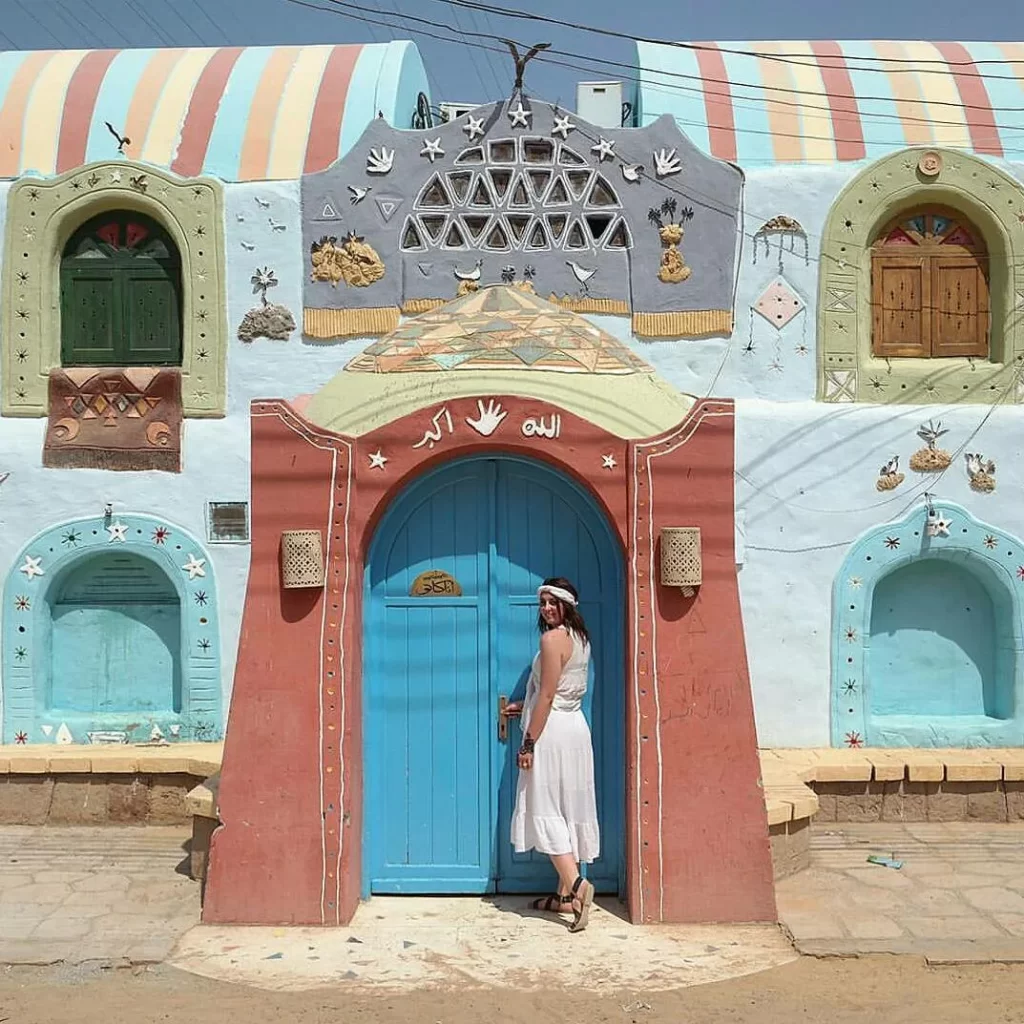
C. Celebration Through Music and Dance:
In the Nubian Village, music and dance are inseparable companions in every celebration, whether marking a joyous occasion or paying homage to ancestral spirits. Festivals, weddings, and community gatherings come alive with the vibrant sounds of traditional instruments and the rhythmic movements of dancers. Through these celebrations, the Nubian people come together in a collective expression of gratitude, joy, and reverence for their cultural heritage. The power of music and dance transcends language, uniting hearts and souls in a harmonious celebration of life and legacy.
VII. Festivals and Celebrations
A. Major Nubian Festivals and Their Significance:
The Nubian Village is steeped in a tapestry of festivals that punctuate the passing of seasons and mark significant milestones in the lives of its inhabitants. Celebrations such as the “Moulid of Abu Simbel” and “Kor Ambada” hold profound cultural and spiritual significance. The “Moulid of Abu Simbel” pays homage to the revered temple of Ramses II, while “Kor Ambada” celebrates the beginning of the Nile’s annual flood, symbolizing renewal and abundance. These festivals serve as a testament to the deep spiritual connection between the Nubian people and their natural surroundings.
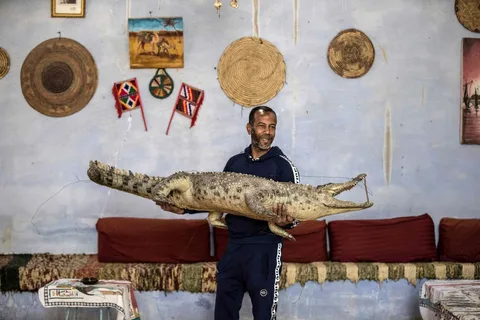
B. Cultural Activities During Celebrations:
During Nubian festivals, the village comes alive with a vibrant array of cultural activities that engage the senses and ignite the spirit. Traditional music and dance performances echo through the narrow alleys, invoking a sense of collective joy and celebration. Elaborate processions, adorned with colorful costumes and ceremonial regalia, wind their way through the village, carrying with them a palpable sense of reverence and exuberance. Artisans and craftsmen showcase their skills, offering visitors a firsthand glimpse into the intricate crafts that define Nubian culture. These activities not only entertain but also serve to reinforce the bonds of community and cultural identity.

C. Participation and Involvement of the Community:
In the Nubian Village, festivals are not merely spectacles to be observed, but communal endeavors that involve active participation from all members of the community. From the youngest children to the eldest elders, everyone plays a role in the preparations and festivities. Families come together to prepare traditional dishes, create vibrant decorations, and contribute to the overall atmosphere of celebration. The collective effort and shared sense of purpose serve to strengthen the bonds of community, creating a profound sense of unity and belonging that resonates long after the festivities have concluded. In this way, Nubian festivals are not only a celebration of culture but also a reaffirmation of the enduring spirit of the Nubian people.

VIII. Challenges and Preservation Efforts
A. Modern Challenges Faced by Nubian Village:
While the Nubian Village stands as a bastion of cultural heritage, it is not without its share of modern challenges. Urbanization, changing economic landscapes, and environmental shifts pose significant hurdles to the preservation of this ancient community. Increasingly, younger generations are drawn to urban centers in search of economic opportunities, potentially leading to a decline in traditional practices and cultural continuity. Additionally, the encroachment of modern infrastructure and development may threaten the delicate balance between tradition and progress that the Nubian Village strives to maintain.

B. Efforts to Preserve Cultural Heritage:
In the face of these challenges, the Nubian Village community has demonstrated remarkable resilience and determination to safeguard its cultural heritage. Local initiatives have been established to document and preserve traditional practices, ensuring that they are passed down to future generations. Museums and cultural centers within the village serve as repositories of history, displaying artifacts and offering educational programs to visitors. Additionally, efforts to revitalize traditional crafts and practices provide economic opportunities for local artisans while simultaneously preserving Nubian cultural identity.

C. Collaboration with Local and International Organizations:
Recognizing the importance of preserving the Nubian Village’s cultural heritage, numerous local and international organizations have joined hands with the community in their conservation efforts. Collaborative projects focus on sustainable development, cultural education, and the restoration of historical sites. These partnerships not only provide essential resources and expertise but also serve as a testament to the global significance of the Nubian Village and its contribution to humanity’s shared cultural tapestry. Through these collaborations, the Nubian Village community demonstrates its commitment to not only survive but thrive, preserving its unique heritage for generations yet to come.

IX. Visiting Nubian Village: Travel Tips and Recommendations
A. Getting to Nubian Village:
- By River: One of the most enchanting ways to reach the Nubian Village is by a traditional felucca boat ride along the Nile. This serene journey offers stunning views of the riverbanks and allows you to approach the village as ancient explorers once did.
- By Road: For those seeking a more direct route, taxis and private transportation services are available. The village is accessible by road, and the journey offers picturesque views of the Nile’s winding path.
B. Accommodation Options and Facilities:
- Nubian Guesthouses: Experience the warmth of Nubian hospitality by staying in one of the village’s charming guesthouses. These accommodations offer a genuine immersion into local life, with comfortable amenities and authentic Nubian decor.
- Eco-Lodges: For travelers seeking a sustainable and eco-conscious experience, several eco-lodges in the vicinity of the village provide comfortable stays with a minimal environmental footprint.
- Amenities: While the Nubian Village exudes rustic charm, basic amenities such as clean water, electricity, and reliable internet connectivity are available, ensuring a comfortable stay for visitors.
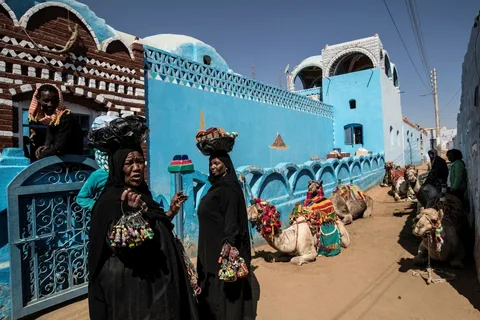
C. Guided Tours and Experiences:
- Local Guides: Engage the services of a knowledgeable local guide who can lead you through the narrow alleys and share the rich history and cultural significance of various sites within the village.
- Craft Workshops: Participate in hands-on workshops with skilled Nubian artisans, where you can try your hand at traditional crafts like pottery, weaving, or woodworking.
- Cultural Performances: Don’t miss the opportunity to witness traditional Nubian music and dance performances. These immersive experiences provide a deeper understanding of the cultural heartbeat of the village.
- Boat Excursions: Arrange a boat excursion on the Nile to explore nearby islands, visit historical sites, and witness the natural beauty that surrounds the Nubian Village.
By following these travel tips and recommendations, visitors can ensure a meaningful and enriching experience in the Nubian Village, creating lasting memories of this unique cultural treasure along the Nile.
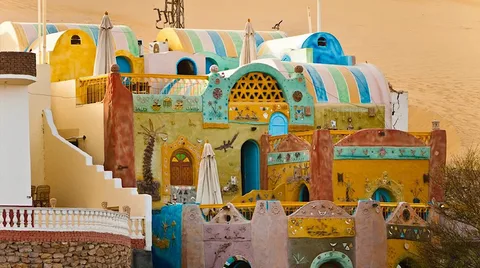
A. Recap of the Rich Cultural Heritage of Nubian Village:
The Nubian Village, nestled along the banks of the Nile River, stands as a living testament to an ancient civilization that has weathered the sands of time. Its vibrant culture, steeped in history and tradition, weaves a tapestry of customs, artistry, and celebrations that reflect the resilience and enduring spirit of its people. From the rhythmic beats of traditional music to the graceful movements of dance, every aspect of life in the Nubian Village is a celebration of heritage and identity.

B. Encouragement to Explore and Support Cultural Preservation Efforts:
As we bid farewell to the Nubian Village, let us carry with us the echoes of its cultural richness and the stories of its people. We are reminded of the importance of preserving such treasures, not only for the Nubian community but for all of humanity. By exploring the Nubian Village and supporting initiatives aimed at cultural preservation, we play a vital role in safeguarding this living heritage for future generations. Through our collective efforts, we can ensure that the Nubian Village continues to thrive as a beacon of cultural diversity and resilience, inspiring and enchanting visitors for years to come.





Comment (0)